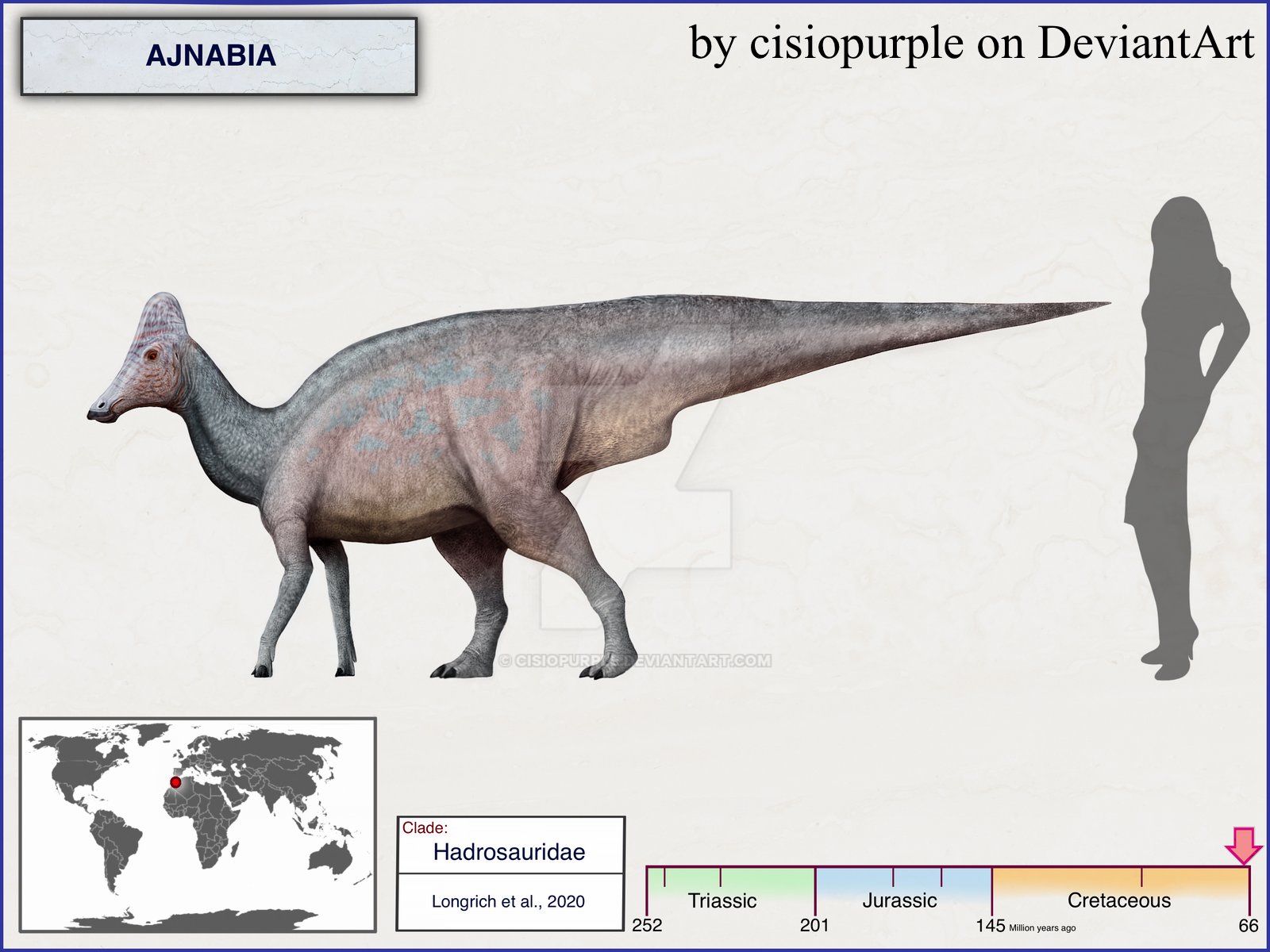Welcome to Ajnabia

Name Definition
Stranger or foreigner in Arabic
Name Given By
Nicholas R. Longrich, Xabier P. Suberbiola, R. A. Pyron, and Nour E. Jalil in 2020
Location
Ouled Abdoun Basin in northern central Morocco, northwestern Africa
Classification
Dinosauria, Ornithischia, Ornithopoda, Hadrosauridae, Lambeosaurinae, Arenysaurini
Size
about 0.5 meters (1.6 ft) tall, around 2.6 - 3 meters long (8.53 - 9.84 ft long)
Temporal Range
Maastrichtian stage of the late Cretaceous, 68-66 million years ago
Ecological niche
medium sized herbivore
Species/Sub Species
A. odysseus
Diet
similar to other hadrosaurids, Ajnabia has a complex dental battery which would have allowed it to process tougher plant material
Introduction
Ajnabia is a genus of hadrosaurid dinosaurs that lived in Morocco during the Late Cretaceous. Ajnabia means stranger/foreigner in Arabic and derives from the Arabic word ajnabi, referring to the fact that it was discovered to another continent that hadrosaurs have never been discovered at, while the specific name refers to the legendary sea traveler Odysseus, referring to the fact that the radiation of lambeosaurines in North America and Ajnabia in Africa probably occurred due to ocean dispersal, with them drifting or swimming between continents. While it might seem shocking, Ajnabia is the first hadrosaurid discovered in Africa, something that you thought would have happened before already, but it only happened in 2020 which is pretty recent, and it made headlines in the palaeontological community. This is a rather unusual place to find a hadrosaurid, since they are usually associated with North America and Asia, however, an increasing number of hadrosaurids, especially from the Arenysaurini tribe which Ajnabia is in, have been found in countries like Spain and France which are in Europe. While Africa was cut off from the rest of the continents during the late Cretaceous, it is probable that sea levels probably fluctuated, temporarily revealing bridges across continents earlier. This is probably how the hadrosaurs radiated out onto different continents across the world, but if that isn't the case, then the only other possible theory is that Ajnabia swam between continents. So does this holotype specimen represent a special hadrosaur that just died and was washed onto the African shores, or was it from a real species of hadrosaur that lived stably? We have yet to discover the answer to this question. If Ajnabia did live with a stable population, it wouldn’t have had much time, since Ajnabia and its other Moroccan contemporaries lived at the very end of the Cretaceous, approximately around 68 - 66 million years ago, which would mean it probably only had around 2 million years to thrive. Ajnabia lived with a lot of African paleofauna including bony fish, sharks including Squalicorax, other cartilaginous fish besides sharks, crocodyliformes, lepidosaurs including mosasaurids, snakes and marine lizards, the plesiosaur Zarafasaura, prehistoric turtles, pterosaurs, mammals, and other dinosaurs including the abelisaurid Chenanisaurus and an unnamed titanosaur.